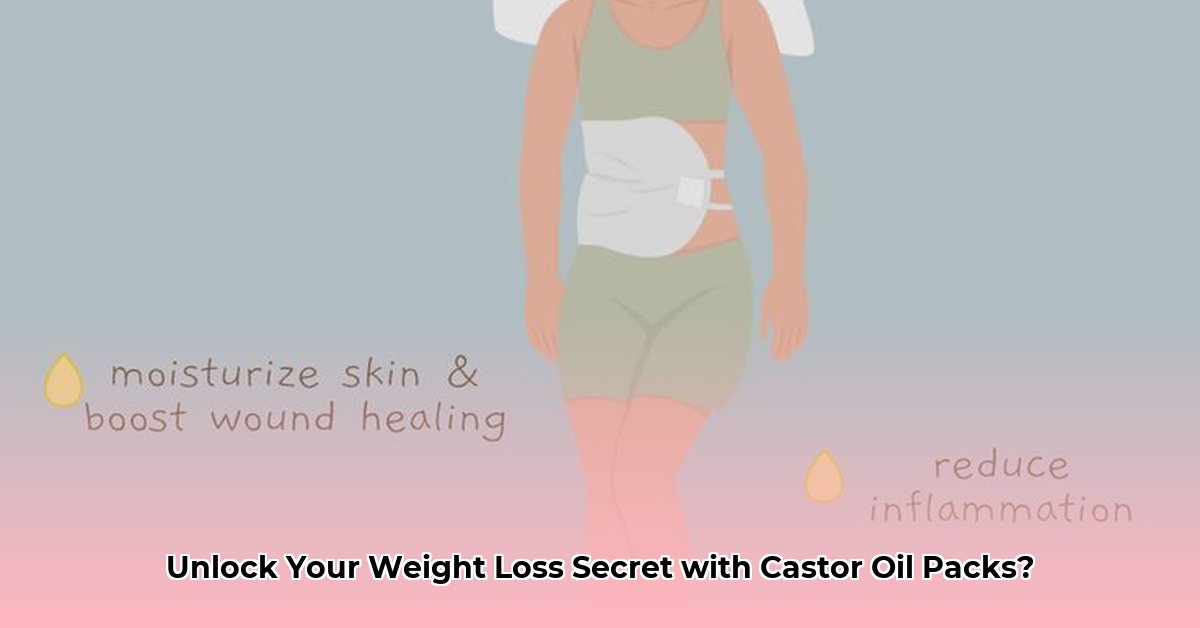
Castor Oil Packs and Weight Loss: Separating Fact from Fiction
Let's address a common misconception: castor oil packs will not cause weight loss. While some believe castor oil aids weight loss, scientific evidence is lacking. Any perceived weight change is likely due to its laxative effect, eliminating waste, not burning fat. Therefore, it's crucial to manage expectations; castor oil packs are not a weight-loss solution.
Understanding Castor Oil Packs: Their Actual Benefits
Although ineffective for weight loss, castor oil packs offer other potential advantages. Ricinoleic acid, a key component, possesses anti-inflammatory and analgesic (pain-relieving) properties. Many individuals report relief from various types of discomfort.
Castor oil packs may provide relief from:
- Muscle soreness (those post-workout aches).
- Joint stiffness and pain (potentially beneficial for arthritis).
- Inflammation (reducing swelling and discomfort).
It's important to note that castor oil packs are often used as part of a broader holistic approach to wellness, not as a standalone treatment. Don't expect miracles; view them as a supplementary tool.
A Step-by-Step Guide to Using Castor Oil Packs
Ready to try castor oil packs? The process is straightforward:
1. Gather Supplies: You'll need high-quality organic castor oil, a soft flannel cloth (large enough for the targeted area), plastic wrap, and a heating pad or hot water bottle.
2. Prepare the Pack: Fold the flannel to the appropriate size. Pour enough castor oil to saturate it thoroughly (damp, not dripping).
3. Apply the Pack: Place the oil-soaked cloth on the skin over the area of pain or inflammation (often the abdomen, but adaptable). Cover with plastic wrap.
4. Apply Heat: Place the heating pad or hot water bottle on top of the plastic wrap. Heat enhances penetration and effectiveness.
5. Relax: Leave the pack on for 30-60 minutes. Use this time to relax and unwind.
6. Remove the Pack: Carefully remove the plastic wrap and cloth. Wipe away excess oil with a damp cloth.
7. Clean Up: Wash the flannel thoroughly with soap and water after each use; reuse as needed.
Safety First: Precautions and Considerations
While generally safe, precautions are necessary:
- Allergic Reactions: Perform a patch test (inner arm) before widespread use to check for allergic reactions (redness, itching, swelling). Discontinue use if a reaction occurs.
- Pregnancy: Avoid castor oil packs during pregnancy due to the risk of uterine contractions.
- Sensitive Skin: Dilute castor oil with a carrier oil (jojoba, grapeseed) if you have sensitive skin.
- Pet Safety: Keep castor oil away from pets; it's toxic if ingested.
Weighing the Pros and Cons
Let's consider the advantages and disadvantages:
| Pros | Cons |
|---|---|
| Potential pain and inflammation relief | Requires preparation and cleanup |
| May improve skin health (anecdotal) | Potential for minor skin irritation |
| Relatively inexpensive and easy to use at home | Limited scientific evidence for all benefits |
| Non-invasive approach | Not suitable for everyone (e.g., pregnant women) |
Remember, while castor oil packs might provide relief, the evidence is still emerging. Consult your doctor before use, especially with pre-existing conditions or medication. Prioritize evidence-based wellness strategies.
How to Safely Use Castor Oil for Topical Acne Treatment
Key Takeaways:
- Castor oil's moisturizing properties (high ricinoleic acid) are beneficial for dry skin.
- However, its thickness may clog pores, worsening acne. Careful, diluted application is key.
- Dilution with a lighter carrier oil is recommended to mitigate risks.
- Always perform a patch test before widespread application.
- Limited scientific evidence supports castor oil for acne beyond moisturization; manage expectations.
Castor oil isn't an acne cure. Its moisturizing and potentially anti-inflammatory properties require careful application. This section details safe topical use for acne treatment.
Understanding Castor Oil's Role in Skincare
Castor oil, rich in ricinoleic acid, is a potent moisturizer. Its occlusive nature seals in moisture, good for dry skin. However, this thickness can trap sebum and debris, potentially clogging pores.
How to Safely Use Castor Oil Topically for Acne
1. Patch Test: Apply a tiny amount to an inconspicuous area and wait 24-48 hours. Monitor for reactions.
2. Dilution: Always dilute with a lighter carrier oil (jojoba, rosehip), e.g., 1:3 ratio.
3. Methodical Application: Apply the diluted mixture only to affected areas using a clean fingertip or cotton swab.
4. Targeted Treatment: Focus on spot treatment; avoid large areas.
5. Incorporate into a Routine: Apply after cleansing and toning, before moisturizing.
Important Considerations & Safety Precautions
- Sensitive Skin: Extreme caution is needed. Dilute liberally and patch test.
- Existing Skin Conditions: Consult a dermatologist before use if you have other skin conditions.
- Allergic Reactions: Discontinue use immediately if you experience any allergic reaction.
Managing Expectations
There is no conclusive research on castor oil's direct acne-fighting ability. Its benefits are primarily moisturizing and potentially anti-inflammatory. It's not a miracle cure. Patience and realistic expectations are essential.